Quick links
Part 1, Abstract and The End of Man–You are here.
Part 2, Psychoanalysis in The Order of Things
Part 3, Seminar XIII and the object a
Part 4, Window not mirror: Las Meninas
Part 5, The Street: Lacan reads Balthus reading Velázquez
Part 6, The poetics of the window: truth of the analyst
Part 7, Conclusion, References, Photo Credits
Abstract
This essay suggests that the minimal 1966 exchange between Jacques Lacan and Michel Foucault in Lacan’s seminar actually stood in for a much fuller debate about modernity, psychoanalysis and art than its brevity would indicate. Using their contrasting interpretations of Velázquez’s painting, Las Meninas, as its fulcrum, ‘‘The Other Side of the Canvas’’ discovers a Lacanian critique of Foucault’s history of modernity, circa The Order of Things. The effort here is to insert the interpretation of Velázquez into the context of both Lacan’s ‘‘Science and Truth’’ (originally the first session of the 1966 seminar) and Foucault’s recently published book. Our interpretation develops above all from Lacan’s contrast between the definition of a painting as a ‘‘window’’ and Foucault’s implicit understanding of it as a kind of ‘‘mirror’’—a distinction in which Lacan discovers his seminal concept of ‘‘object a.’’ Pursuing the understanding of object a as the ‘‘surface’’ of the perspectival window allows us to understand why Lacan expands the discussion of Velázquez both into an understanding of twentieth-century paintings (Magritte, Balthus) and an implicit interpretation of the difference between philosophical and psychoanalytic approaches to science and history.
The other side of the canvas
In May 1966, Michel Foucault made a visit to Jacques Lacan’s seminar. Foucault had heard about Lacan’s reference in a previous session to his recent book, Les mots et les choses and, therein, to Foucault’s interpretation of the painting of the Meninas by Diego Velázquez. The non-discussion that followed—Foucault’s contribution to the session was limited to about 10 words—should not be mistaken for a non-event. Quite the contrary, Lacan’s ‘‘friendly’’ reference to Foucault’s interpretation of this painting hides a profound dispute about the character of the contemporary world and who we are in it.1 With their disagreement about Las Meninas, Lacan and Foucault in fact reveal contrasting approaches to subjectivity and history.
Click on images to see larger.
What was in dispute between Lacan and Foucault in 1966 is the character in a painting of what’s called the picture plane, a site that is the very theme of Velázquez great pictorial essay. Certainly Foucault and Lacan agree that the key to Las Meninas lies in the large canvas—of which viewers see the back alone— taking up the ‘‘picture’s’’ left-hand edge and from which the ‘‘painter’’, Velázquez himself, has apparently just stepped back.2 Furthermore, as does Lacan, Foucault understands the way this canvas stands in for the picture plane itself, anchoring the perspectival and compositional tricks by which the painter has achieved his ‘‘baroque’’ effects. He sees how this canvas anchors a ‘‘ceaseless exchange,’’ one which allows an ‘‘infinite’’ play between the positions of viewer and scene, subject and object.3 That is, for both Lacan and Foucault, the turned canvas thematizes the very possibility of a play of representations in which, for example, the painter is both ‘‘in’’ the scene and painting it from ‘‘outside,’’ etc., etc.
Where, according to Lacan, Foucault is mistaken, is in what he takes to be the stabilizing precondition and genuine ‘‘subject’’ of Velázquez’s painting—the figures of King Phillip IV and his wife. In Foucault’s understanding (a common if not predominant art-historical interpretation), the mirror at the back of the depicted room, in which the King and Queen are reflected, tips the viewer of Las Meninas off to what’s on the other side of the reversed canvas: the picture depicts Velázquez depicting the royal couple. Thus, a veritable Foucualdian orgy of the pictorial, all of it turning around the stabilizing royal representation. For Foucault, the substitution of a mirror image onto an invisible painted surface undergirds the baroque system of the painting and, by extension, the epistemological system of the classical age. A ‘‘royal’’ subjectivity masters the epistemological landscape, dominating nature and the human.
But, according to Lacan, precisely in such substitution of mirror for painting, Foucault retreats from his correct identification of the key issue for Velázquez himself, the turned canvas, qua representational surface. What does that mean? First, and most simply, it means that Foucault has missed a vital moment in the play of representations in Las Meninas—the compositional and perspectival framework that actually forbids the obvious reading by which the hidden painting depicts the royal couple. Neither the size, nor the position of the image in the mirror correctly represents the ‘‘viewpoint’’ structuring the representational play of Las Meninas. Lacan argues that this and various details of the size and positioning of the turned painting in the painting make it impossible that the king and queen form the ‘‘subject’’ of that mysterious canvas.
As to what, Lacan suggests, does occupy the occluded and hidden space of the turned canvas, his seminar’s answer is at first unclear, but only because what eventually emerges is a Lacanian insistence that that’s the wrong question to ask. In other words, Velázquez’s painting has two ‘‘aspects,’’ two faces that it can offer a viewer. On the one hand, its labyrinthine play of representation reinforces the basic historical phantasy of painting itself, the continuity between occupied visual space and the space of representation. Inviting us into the ‘‘looking-glass world,’’ it tempts us to turn around the hidden canvas and ‘‘see me,’’ as Lacan repeatedly puts it. On the other hand, though, the turned canvas in Las Meninas also hits us over the head with another function of painting, of seeing and of knowledge. Lacan’s work in Seminar XIII is to articulate this other painterly function, to work with Velázquez (and Rene ́ Magritte and Balthus, as it will turn out) to distract us from the seduction of the representational labyrinth—all of it in the name of a specifically psychoanalytic alternative. But to explain that other function demands some background about the projects of both Foucault and Lacan as they conceived them in 1966.
1 The End of Man
The regal foundation for representation is not only key for Foucault’s reading of Las Meninas, it is also what allows the painting to serve as synecdoche for the entire history recounted in The Order of Things – the story of ‘‘the human sciences’’ and their emergence out of modern representation; for in the painting a perfect exemplar of the classical episteme also explicitly points forward to the modernity that will displace it. While it historically belongs within the world of classical subjectivity— for which representation is still anchored to an overall ordering of nature (the taxonomy, the general table)—Las Meninas anticipates the themes of what Foucault calls the properly ‘‘modern science’’ of the nineteenth and twentieth centuries. He makes this explicit when, later in Les mots et les choses, in his introduction to the modern episteme, he recalls his introductory reading of the painting. There he tells us that Velázquez’s masterpiece is both the type for a classical knowledge, a knowing for the sovereign subject who alone cannot appear within the table of things known4 and the promise of a final reflection of the subject, one that will engulf the ‘‘knower’’ within a now-transformed science.5 After all, what else (for Foucault) is indicated by the depiction of the royal couple at the viewpoint-situated mirror, a point substitutive of ‘‘our own’’ presence in front of the painting? Phillip the 4th and his bride not only ‘‘rule’’ the scene of Las Meninas, they do so in a fashion suggestive of the future goal of the ‘‘human sciences.’’
If you can go that far with me, then you will be able to follow, also, Lacan’s implied suggestion that hidden in the radicality of Foucault’s gesture in The Order of Things in relativizing ‘‘man,’’ is, in fact, something that is hardly radical—an implicit end or telos guiding his entire account. Let’s take this one step at a time: on a first reading, and certainly at the level of polemic, Foucault puts Las Meninas at the beginning of The Order of Things in order to challenge historicism and particularly the smooth historicism of Marxist humanism: it stands there as if to say that all efforts to discover ‘‘man’’ in renaissance humanism or even Cartesian rationalism must fail—that, instead, knowledge has progressed in a series of discontinuous ‘‘epistemes’’ of which only the most recent, emergent at the beginning of the nineteenth-century, really contains the ‘‘man’’ who underlies contemporary (historicist) understanding. Seen in light of this, Foucault’s defining project in Les mots et les choses, Las Meninas is simply an introduction to the alienness of a classical knowledge and, as such, it can serve as entre ́e to a sequence of chapters that examine the even stranger, more distant, world of renaissance ‘‘similitude.’’ In other words, the painting forces us to acknowledge the discontinuity of knowledge.
But the problem here (I’m not the first to point this out) is that Foucault’s interpretation of Las Meninas, like the larger account of knowledge from the fifteenth–twentieth centuries that follows it, is too good—too bound to a formal logic which it constructs. In fact, Foucault gives us a better story of the continuity of knowledge (disrupted, yes, by radical epistemic shifts, but within a comprehensible and comprehended framework), rather than a non-story about its discontinuity. It is in this way of seeing things that Foucault’s synecdochal return to Las Meninas late in The Order of Things makes sense: we are more struck with the familiarity of the paradigm announced in Las Meninas—its contemporaneity—than with its strangeness.
Unacknowledged by Foucault, his tale (both in the painting and in his book) is the story of our increasing liberation from views of ourselves positing us to be limited by any nature, ‘‘human’’ or otherwise. At first, in the classical period, representation intervenes within the cosmological world of the renaissance, insisting upon the mind’s (language’s) capacity to order beyond nature, to impose order on the natural. Still, the limit of the classical sciences emerges (as Foucault brilliantly sees) in the very forms of such knowledge, which inevitably seek, and find, a nature composing a whole: sign and nature separate, with strict orderliness imposed by the mathesis universalis of classical science. As a result, for the practitioner of classical ‘‘science,’’ we may rest assured that the ordering produced by language as an entire meaning system reflects the orderliness of nature.
Given the hidden mainspring of Foucault’s argument, this residual naturalism relegates classical knowledge to an intermediate status, demanding completion. And we have the inner necessity of the ‘‘modern’’ break—a new kind of science that, with life, labor and history robs from the previously unmolested sovereign subject its excessiveness to representation and grants it to new, dynamic sciences, above all, to the emergent ‘‘human sciences.’’ In other words, the chapters in The Order of Things devoted to the transformation of knowledge in the nineteenth-century introduce an episteme whose virtue is precisely its ability to absorb the subject, becoming, transience—in short all that previously had resisted objectification—into a more subtle scientific apparatus. This logic of ingestion fueling the explosion of modern sciences comes to its full fruition when it consumes the entire ‘‘subjective’’ universe (the ‘‘self’’ and its world) in the new ‘‘human’’ sciences—psychology, history, anthropology, sociology, etc.
Thus, in a text whose avowed purpose is to challenge the reassurance offered by smooth historical narrative—to disrupt historicism’s illusion of a single ‘‘subject’’ of history—The Order of Things gives us a closely reasoned alternative narrative. It all leads to the ‘‘double murder’’—thrice announced—of God and Man; it leads to the end of every religion (whether theist or humanist) insofar as the religious assumes a privileged, a sacred and untouchable, subject. No doubt this story, leading inexorably to the ‘‘sacrifice’’ of that subject underlying it, is meant to be more disturbing than its humanistic forebear. However, we cannot ignore the fact that this ‘‘death of man’’ foreseen at the end of The Order of Things is there from the very beginning and thus already resurrects him in its very form, that it reintroduces a subject for the history of knowledge precisely in sacrificing one.
Go to Part 2, Psychoanalysis in The Order of Things.
2 For Foucault, they provide ‘‘the center around which the entire representation is ordered,’’ a center
which is sovereign.’’ Foucault (1967, p. 14).
3 Foucault (1967, p. 5).
4 Foucault (1967, p. 307).
5 Foucault (1967, p. 312).

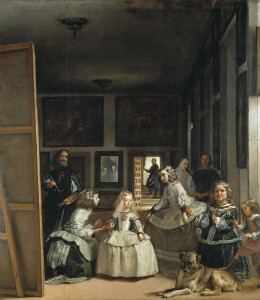
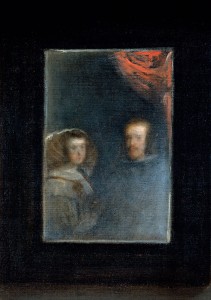
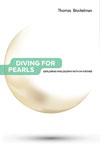
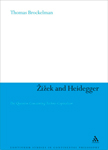
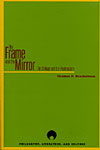
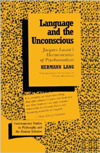 Language and the Unconscious: Lacan's Hermeneutics of Psychoanalysis
Language and the Unconscious: Lacan's Hermeneutics of Psychoanalysis

